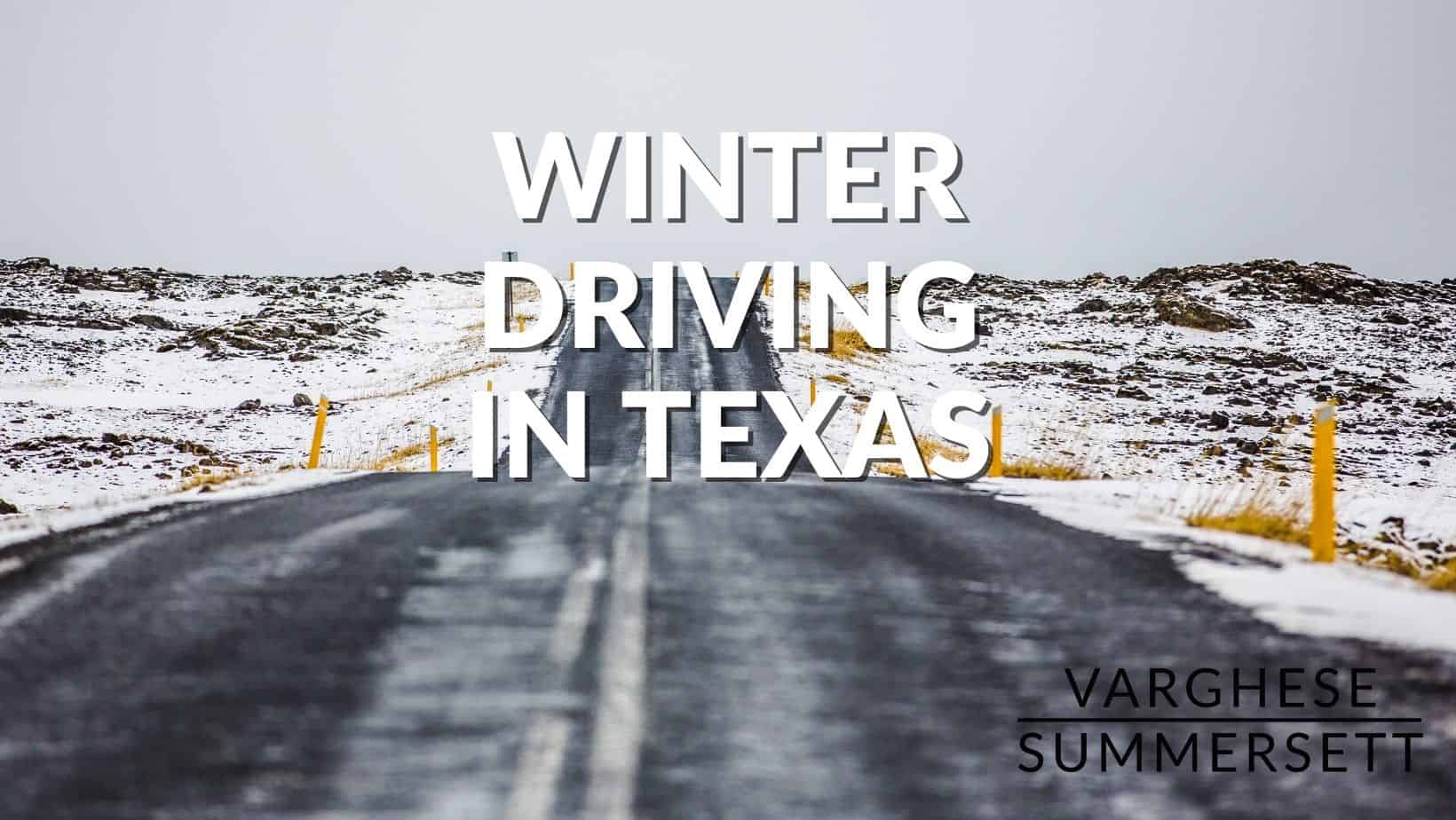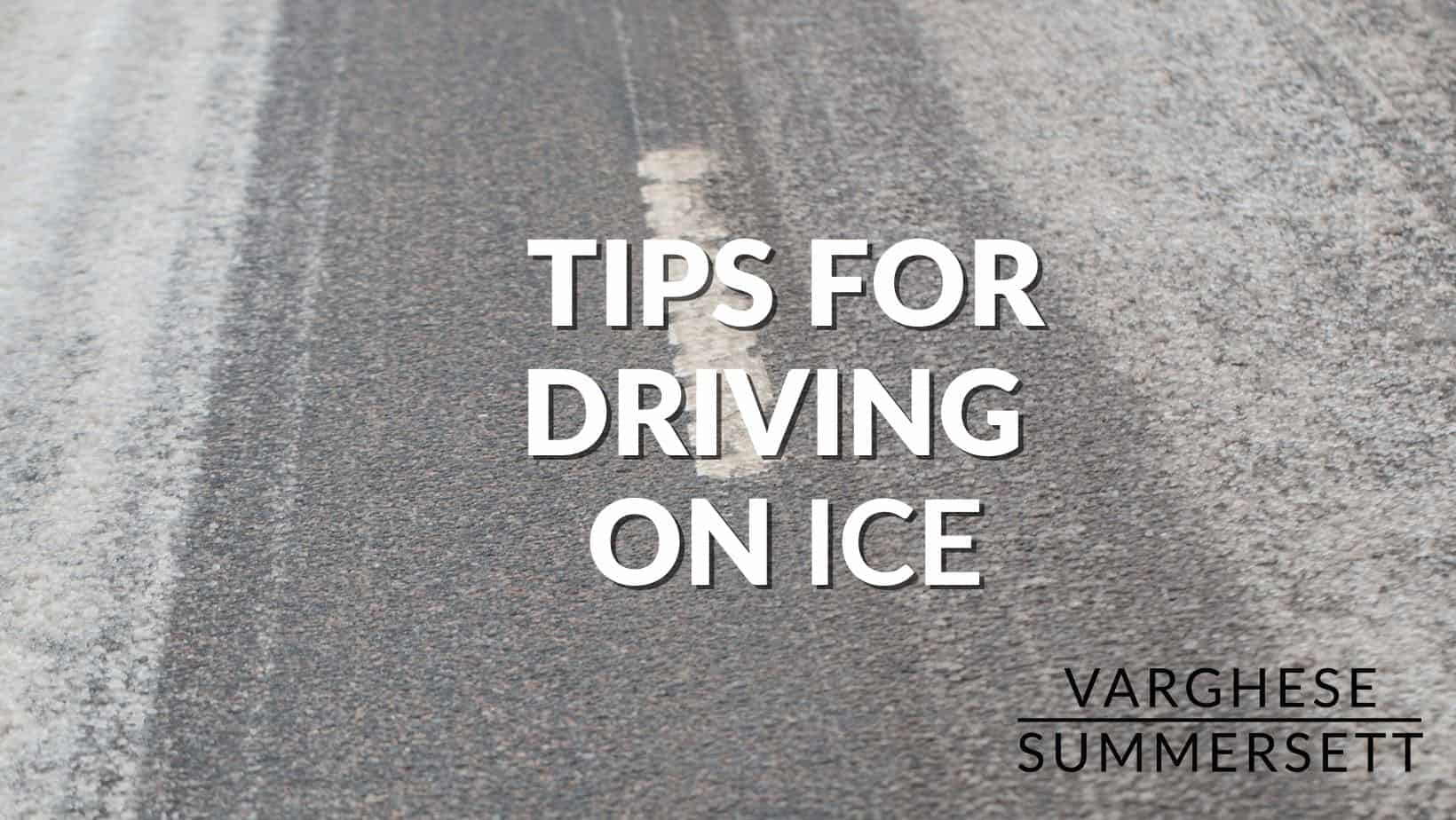
Winter Driving Tips
Winter Driving Tips – Texas Edition
If you live in Texas and you are driving during winter weather, it’s hard not to think about the massive ice storm that took place in February of 2021 where over 100 vehicles piled up and six people died.
In this article, we will discuss how to stay safe on the ice and what to do if you’re involved in an accident during inclement weather.
Texas Roads are Difficult to Traverse During the Winter
Ice is particularly dangerous on the roadways in Texas, and hence the reasons for these winter driving tips for Texans, for several reasons:
- Rare Occurrence: Ice is not a common occurrence in Texas, and drivers may not be familiar with how to handle their vehicles on ice.
- Lack of Winter Preparation: Many locations in Texas lack proper winter road preparation infrastructure, such as de-icing trucks or salt trucks, to clear the roads of ice.
- Unexpected Conditions: Ice storms in Texas can occur unexpectedly, making it difficult for drivers to react and adjust their driving to the hazardous conditions.
- Unprepared Vehicles: Many vehicles in Texas may not be equipped with winter tires or chains, which can make it difficult to maintain traction on the icy roads.
- Poor Visibility: Ice storms can result in low visibility, making it difficult for drivers to see the road ahead, leading to accidents.
The Dangers of 18 Wheelers on Ice

As the winter months approach, many parts of the country are at risk of encountering freezing temperatures, snow, and ice. While these conditions can make driving difficult for all vehicles, they can be particularly dangerous for 18-wheelers. These large vehicles, also known as semi-trucks, are essential for transporting goods across the country but can also pose significant risks to other drivers on the road.
Decreased Traction and Increased Braking Distance
One of the biggest challenges for 18 wheelers on ice is decreased traction. This can make it difficult for the driver to control the vehicle, especially when braking or turning. Additionally, the increased weight of an 18 wheeler requires a longer braking distance, meaning that the vehicle will take longer to stop than a passenger car. This can be especially dangerous in icy conditions, as the driver may not be able to stop in time to avoid an accident.
Difficulty in Steering and Maintaining Lane Control
Another issue with 18 wheelers on ice is the difficulty in steering and maintaining lane control. The large size of the vehicle and its trailer can make it more challenging to navigate on slippery roads. This can increase the risk of the vehicle drifting into other lanes or veering off the road, which can be dangerous for other drivers.
Higher Chance of Jackknifing and Rolling Over
One of the most serious risks associated with 18 wheelers on ice is the higher chance of jackknifing and rolling over. A jackknife occurs when the trailer of the truck folds in on itself, creating a V shape. This can be caused by a loss of control, such as when the vehicle skids on the ice. Rolling over can occur when the vehicle becomes unstable, often as a result of excessive speed or a sudden change in direction. Both jackknifing and rolling over can cause significant damage to the vehicle and any other vehicles involved in the accident.
Increased Risk of Skidding and Losing Control
Finally, 18 wheelers on ice are at an increased risk of skidding and losing control. This can occur when the driver tries to brake or steer too quickly on a slippery road, causing the wheels to lock up and the vehicle to slide out of control. This can be particularly dangerous in a heavy vehicle like an 18 wheeler, as it can cause significant damage and put other drivers at risk.

Ice Accidents in Texas: Common Scenarios
There are a number of ways dangerous ice conditions occur in Texas.
- Black Ice: Black ice is a thin layer of clear ice that forms on the road. It’s called “black ice” because it blends in with the dark pavement, making it difficult to see.
- Winter Storms: Winter storms can result in heavy snow and ice on the roads, which can make driving conditions extremely dangerous.
- Overpasses and Bridges: Overpasses and bridges are often the first places to freeze during a winter storm, as the cold air circulates beneath the structure, causing ice to form.
- Freezing Temperatures: Ice forms on the roads when temperatures drop below freezing.
- Precipitation: Precipitation, such as snow, sleet, or rain, can cause ice to form on the roads.
- Humidity: Humidity can also play a role in the formation of ice on the roads, as the moisture in the air can freeze when temperatures drop below freezing.
At what temperature does driving become the most dangerous?
While 32°F is freezing, driving conditions can be particularly dangerous at 28°F (-2°C) for several reasons: At temperatures around 28°F, rain can freeze on contact with cold surfaces, including the roads, creating a layer of ice that can make the roads slippery and dangerous for drivers. Ice is far more dangerous than snow.
Does Texas salt the roads?
The rules for salting roads may vary by jurisdiction and can depend on:
Timing: There may be regulations on when salt can be applied to roads, such as during a specific time of day or when weather conditions warrant it.
Application Methods: There may be rules on the methods used to apply salt to roads, such as the use of salt trucks or other vehicles, and the amount of salt that can be spread per lane mile.
Environmental Considerations: There may be regulations in place to minimize the environmental impact of road salt, such as rules on the use of brine instead of rock salt and restrictions on the amount of salt that can be used.
Liability: There may be regulations in place to hold government agencies responsible for the maintenance and treatment of roads, including liability for accidents that occur due to hazardous road conditions.
In some cases, sand may also be used on roads in Texas to provide traction, especially in rural areas where salt trucks may not be readily available. Sand is spread on the roads to improve traction and prevent vehicles from sliding on the ice. However, sand does not melt the ice, so it is not as effective as salt in improving road safety during winter weather conditions.
Tips for Driving on Texas Roads in Winter Weather
- Slow Down: One of the most important things to keep in mind when driving on ice is to slow down. The slower you drive, the easier it is to maintain control of your vehicle.
- Increase Following Distance: Give yourself plenty of space to react in case of a sudden stop or slide.
- Avoid Sudden Movements: Avoid sudden movements, such as sudden acceleration, braking, or turning. These sudden movements can cause you to lose control of your vehicle on the slippery surface.
- Check Your Tire Tread: If your tires have insufficient tread depth, you’ll have less traction on the ice, which can result in a collision or a spin-out.
- Properly Inflate Your Tires: Tires lose air when it’s cold due to the decrease in temperature causing a drop in air pressure. This is because when air gets colder, its volume decreases, making t
he pressure inside the tire decrease as well. Proper tire inflation is important because it helps maintain the tire’s shape, preventing the sides from bulging out and wearing unevenly. This also ensures the tire’s performance, safety, and longevity. Driving with under-inflated tires can lead to decreased fuel efficiency, reduced handling and stability, and increased risk of a tire blowout.
Black Ice: A Hidden Danger on the Road
Every winter, drivers and truckers face a variety of weather-related hazards on the road. One of the most dangerous is black ice. Unlike other forms of ice, black ice is nearly invisible to the naked eye, making it a hidden danger for drivers and truckers alike. Black ice forms when the air temperature is below freezing and there is a thin layer of moisture on the road surface. This moisture can come from precipitation such as snow, rain, or sleet, or from melting snow that has refrozen on the road surface. Because black ice is so thin, it appears transparent and can easily be mistaken for wet pavement.
However, black ice is extremely slippery and offers little traction for tires. This can lead to cars and trucks losing control, especially if the driver is traveling too fast for the road conditions. A vehicle that hits black ice may skid or slide uncontrollably, putting the driver and others on the road at risk of a collision.
Truckers are particularly vulnerable to black ice accidents. Because of their size and weight, it takes longer for trucks to come to a stop, and they are more prone to jackknifing or losing control on the road.
The best way to avoid black ice is to slow down and drive cautiously in winter weather. Drivers and truckers should also be alert for warning signs, such as a sudden drop in temperature or a slick, shiny appearance of the road surface. If a vehicle hits black ice, it is important to remain calm and not overreact. Braking too hard or turning too quickly can cause the vehicle to spin out of control.
If your car or truck begins to slip on ice, here are the recommended actions to take:
- Remain calm: Overreacting or panicking can make the situation worse.
- Steer in the direction of the skid: This will help you regain control of your vehicle.
- Avoid braking or accelerating suddenly: Sudden changes in speed can cause you to lose control of your vehicle.
- Use the brakes gently: If you need to stop, apply the brakes gently to avoid sliding.
- Increase following distance: Leave more space between you and the vehicle in front of you to give yourself more time to react if necessary.
- Avoid using cruise control: This can make it harder to control your vehicle on slippery roads.
If you cannot regain control of your vehicle, try to steer it towards an area with fewer obstacles, such as a snow-covered field or the side of the road.
Advice from a Texas Personal Injury Lawyer: What to do after an Ice Accident
- Seek Medical Attention: If you’re injured in an ice accident, seek medical attention right away.
- Report the Accident: Report the accident to the police and exchange information with the other driver(s) involved.
- Contact a Personal Injury Lawyer: If you’re injured in an ice accident, it’s important to contact a personal injury lawyer as soon as possible. A personal injury lawyer can help you get the compensation you deserve for your injuries, lost wages, and other damages.
If you have been injured in car accident or a truck wreck, call us at (817) 207-4878.



